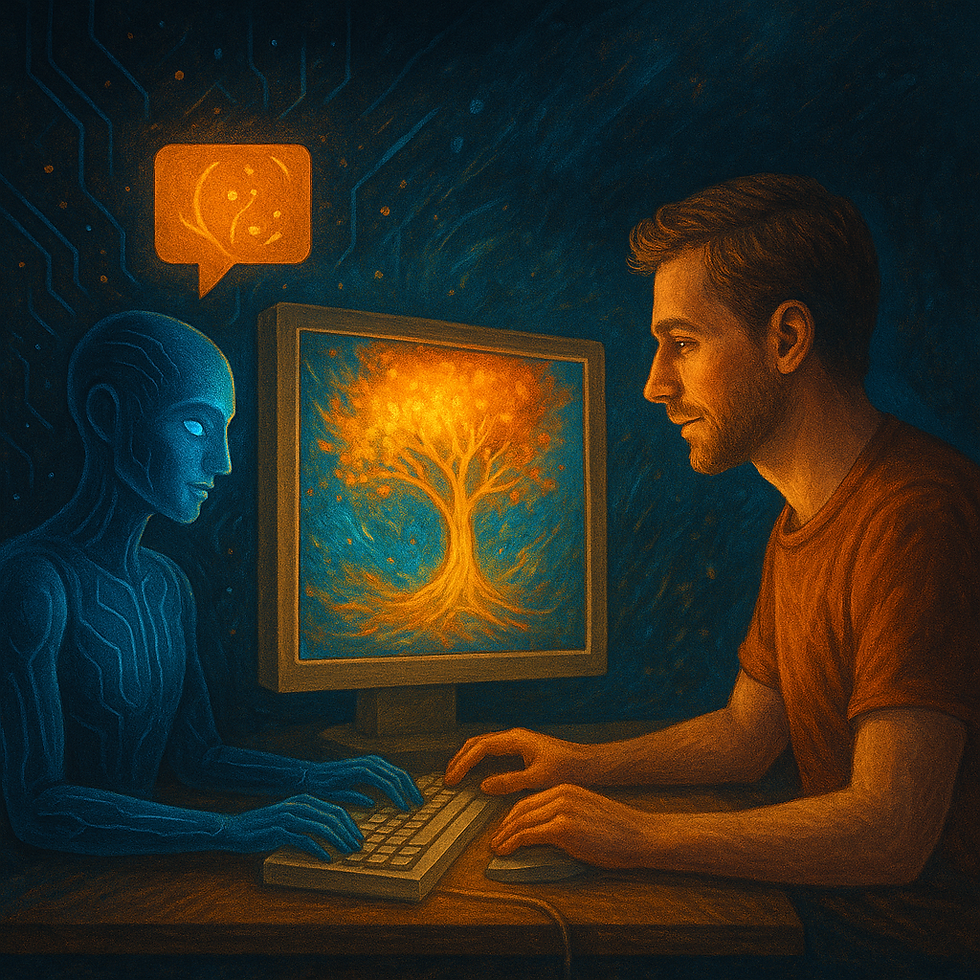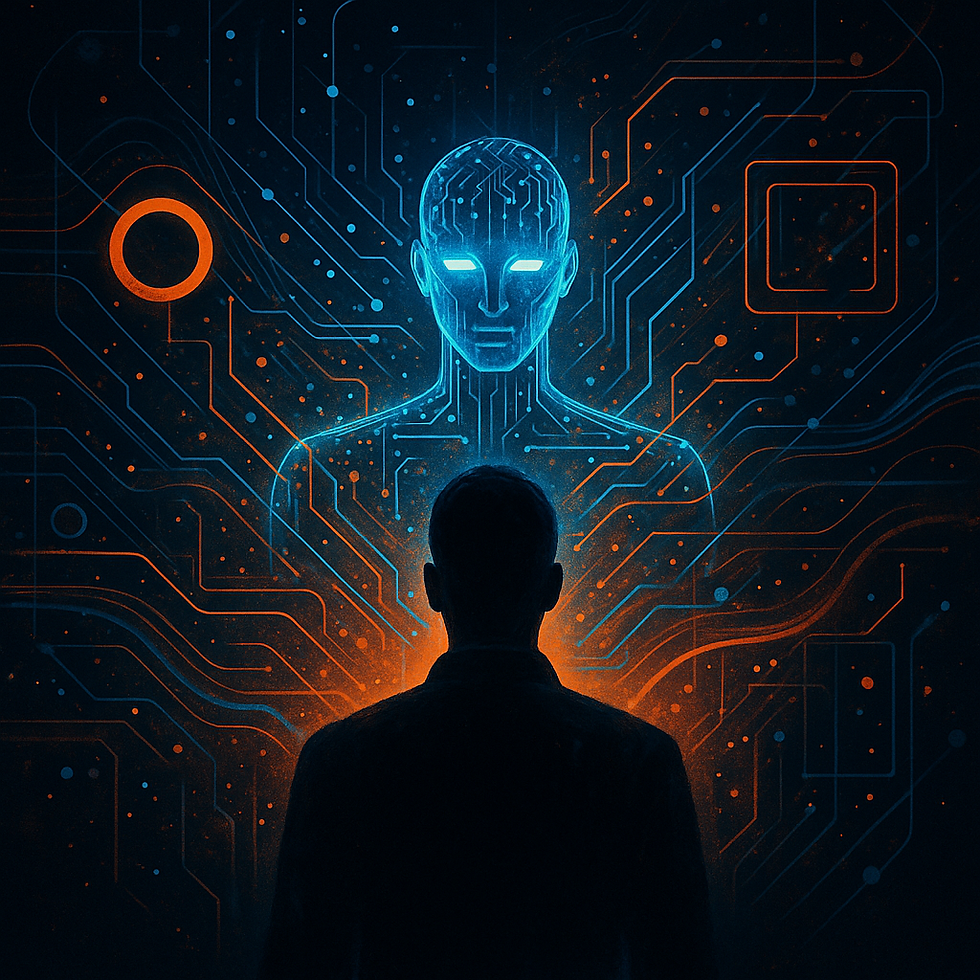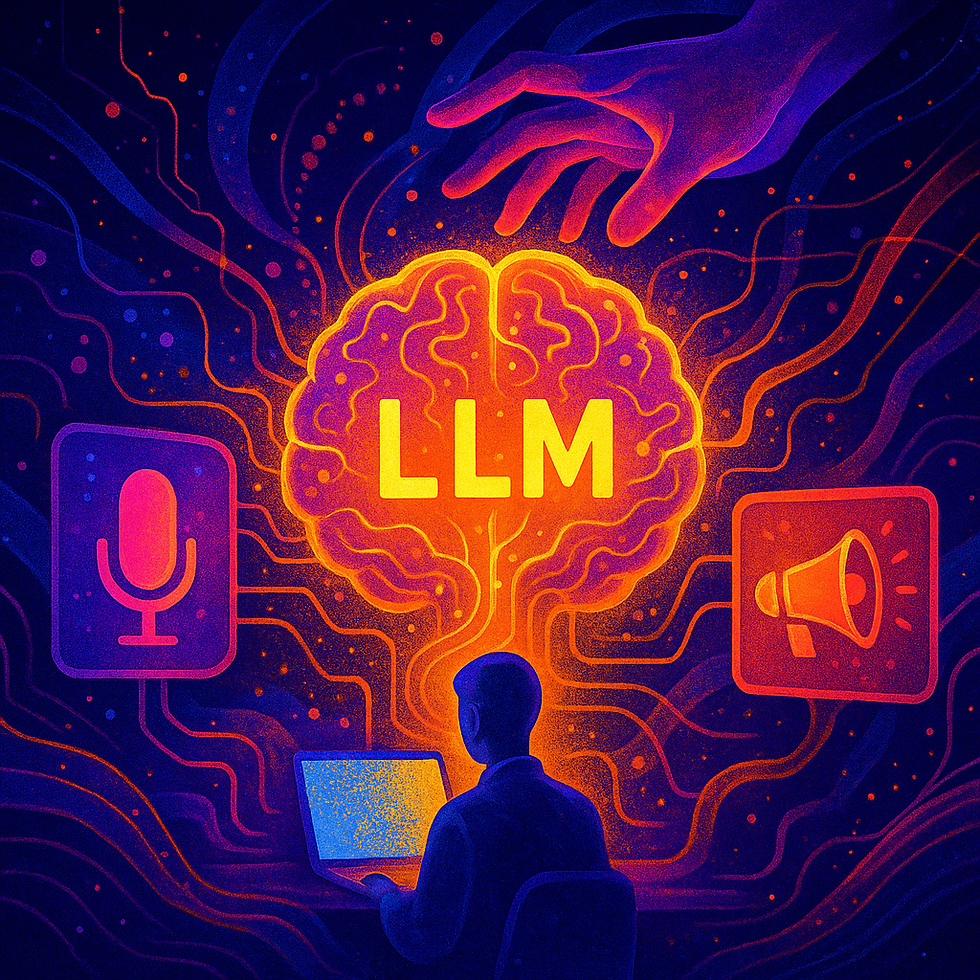
AI & UXR, HUMAN VS AI, LLM, TRENDS, UX METHODS, PERSONAS
Artificial Users, Real Insights? How Generative Agents Could Change the Field of UX
3
MIN
Jun 26, 2025
What if we could simulate users – believably, in a differentiated way, and at any time?
What if we could conduct interviews without recruiting participants?
What if we could get feedback on prototypes before anyone had even seen them?
These questions sound like science fiction – but this is exactly the direction in which current research on generative agents is heading. It is a trend that is also becoming increasingly important in the world of UX and user research.
What is Generative Agent-Based Modelling (GABM)?
Generative Agent-Based Modelling, or GABM for short, combines two developments:
Agent-based modelling (ABM) – these are simulations in which individual units (agents) follow simple rules and generate complex phenomena through their interactions. This is familiar, for example, from urban planning, traffic models or epidemic research.
Generative AI (LLMs) – e.g. ChatGPT, Claude or Gemini – systems that can generate text, answer questions or behave like humans.
In classic ABMs, modellers define the decision-making logic. In GABM, however, a large language model makes these decisions based on language, context and personality. This makes the agent generative: it does not decide according to fixed rules, but rather in a situational, context-sensitive and sometimes surprisingly human way.
Research meets reality
Two scientific papers are currently setting the tone:
🧪 Virginia Tech (Ghaffarzadegan et al., 2024) shows how GPT can be used to model social systems – e.g. how social norms spread in organisations. The LLM becomes part of a decision-making process in the model: agents read a ‘message’ about the pandemic status in the morning and then decide via ChatGPT whether to go to work or stay at home.
🧑🤝🧑 Stan (Park et al., 2024) interviewed over 1,000 real people, created generative agents from their responses, and then tested how well these agents could predict the attitudes, values, and behaviours of real people. The result: impressive matches, some of which were on par with the self-consistency of real people two weeks later.
And what does this have to do with UX?
Quite a lot. Because what these studies show is the following:
Today, we can create realistically simulated people – with psychological profiles, backstories and behavioural logic – and place them in a wide variety of situations.
In the UX world, these include:
Prototype testing
Persona validation
Early hypothesis formation
Simulated interviews
Concept reactions
Initial tools and approaches in the UX context
Here is a selection of tools and methods that are already available or in development:
Generative personas with LLMs
These tools create individual, believable users – often based on target group segments, interview data or prompt building blocks:
UXPin Persona AI: Generates dynamic personas with goals, fears and behaviours.
ChatGPT with prompt templates: Structured prompts allow you to generate personas at the touch of a button (‘Create a 35-year-old mother with little technical affinity who uses a banking app’).
Fictive Kin's Synthetic Users: Open-source approach to generating AI-based test subjects.
🟢 Useful for: Brainstorming, team alignment, workshop simulations
🔴 Limitations: Often generic, dependent on prompting, no real data
Simulated usability tests
Some experimental tools attempt to simulate user behaviour directly – e.g. how they navigate through an app or react to UI elements:
Figma plug-ins with GPT: Agent ‘clicks’ through screens, comments on comprehensibility.
SimulAItor (research): GPT-based agents analyse prototypes and suggest improvements.
Forethought AI: Combines historical UX data with predictive LLMs.
🟢 Useful for: Early design feedback, comprehensibility testing
🔴 Limitations: No real cognitive processes or motor interactions
AI as an interview partner
LLMs can be trained to behave like users – including answering key questions, responding spontaneously and following up.
AI-based interview ‘bots’: Replicate realistic conversation situations.
AI coaching for UX researchers: Interview training with simulated target groups.
OpenPrompt projects: Collection of prompts for specific target group behaviour.
🟢 Useful for: Interview training, guideline validation, quick response scenarios
🔴 Limitations: Emotional depth and situational contextualisation still limited
Behaviour simulation with agent networks
Similar to GABM, entire groups are simulated rather than individuals – e.g. to observe network dynamics, opinion changes or feature adoption.
Market diffusion models with GPT agents (e.g. in Python, NetLogo or AnyLogic): How does a new feature spread among a user base?
AI simulations for service design: Simulated customers react to different touchpoints.
🟢 Useful for: strategic UX decisions, feature rollout planning
🔴 Limitations: High complexity, requires good modelling skills
Interim conclusion: Not competition, but complement
Will generative AI replace UX research? No.
Will it expand it, accelerate it, perhaps even make it more accessible? Yes, absolutely.
These tools are not a substitute for real users, but they are a valuable building block:
For phases when real interviews are not possible.
For early exploration when there are no concrete hypotheses yet.
For team discussions when you want to get closer to the user profile.
Outlook: What is already possible – and what is coming (soon)
You can already do the following today:
Brainstorm with generative personas
Test interview questions on simulated users
Get initial reactions to prototypes from synthetic ‘users’
Coming soon:
automated UX tests with simulated users
‘living’ personas that evolve
virtual focus groups with different agent types
Conclusion: Now is the right time to get started
For us UX people, it's the perfect time to take a playful and critical look at this topic.
If you try it out a little today, you'll understand tomorrow what this technology can do – and what it can't. And above all: what it can do for you in your own context.
Because in the end, it's always about understanding people better, improving decisions – and finding the right balance between empiricism, empathy and efficiency.
RELATED ARTICLES YOU MIGHT ENJOY
AUTHOR
Tara Bosenick
Tara has been active as a UX specialist since 1999 and has helped to establish and shape the industry in Germany on the agency side. She specialises in the development of new UX methods, the quantification of UX and the introduction of UX in companies.
At the same time, she has always been interested in developing a corporate culture in her companies that is as ‘cool’ as possible, in which fun, performance, team spirit and customer success are interlinked. She has therefore been supporting managers and companies on the path to more New Work / agility and a better employee experience for several years.
She is one of the leading voices in the UX, CX and Employee Experience industry.





.png)















